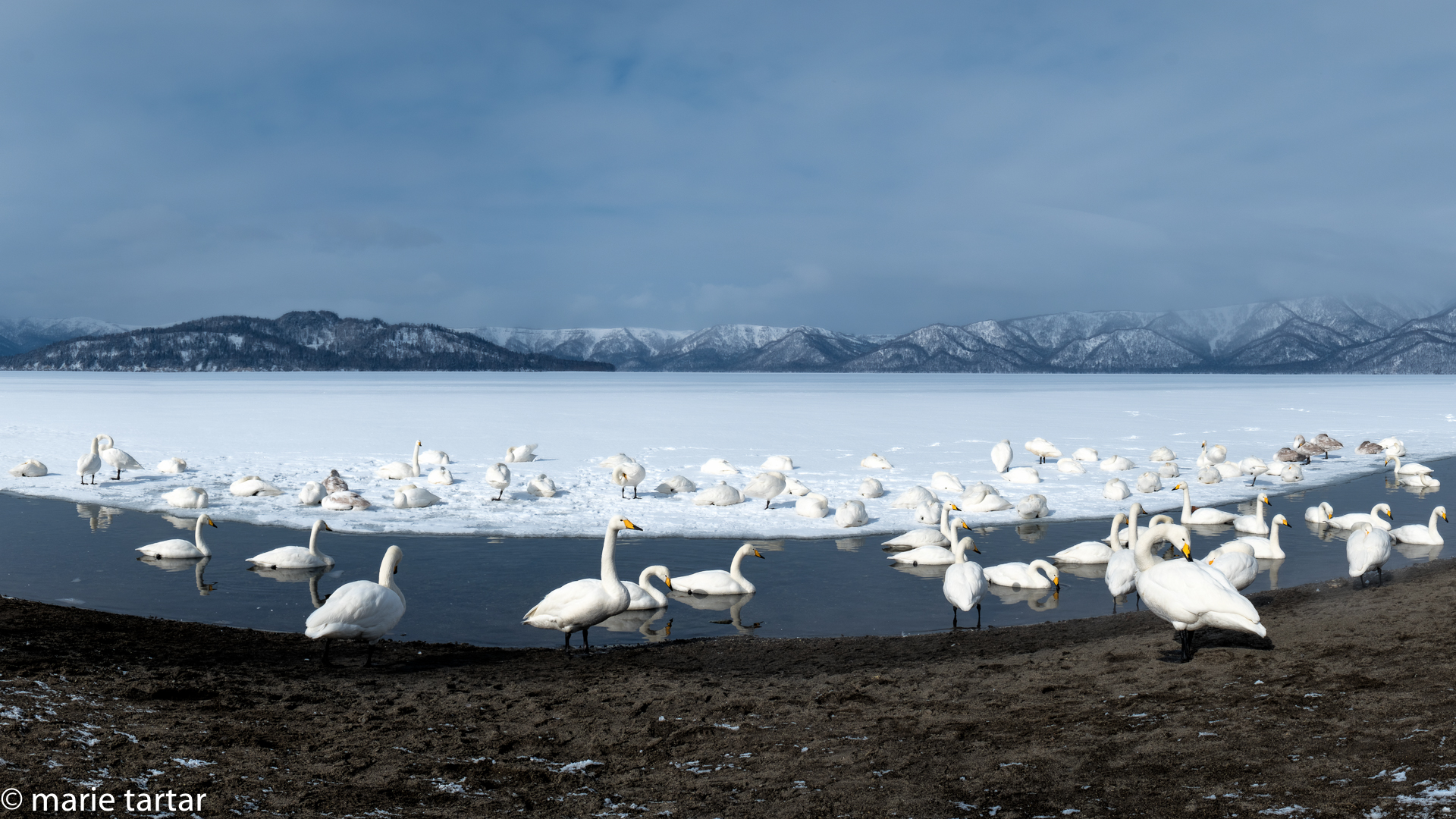Although we’ve been to Antarctica and the Arctic, northern Japan in February set a new bench mark for us in terms of shooting in COLD, frigid temperatures.
The impetus to travel to Hokkaido in winter is twofold. The first is the unique and photogenic wildlife. The second is the transformation of the landscape by abundant snow into a minimalist winter wonderland.

In this article, I’ll discuss the photographic gear I found most useful in different shooting situations, as well as useful non-photographic items for dealing with the cold, ice and snow.
Foul weather preparation
We covered in some depth the layered approach to dressing for shooting in the cold in a prior article on shooting in Arctic Svalbard, north of Norway in the Arctic Circle. I found Japan even colder and was VERY happy I had included a few articles which I’ll highlight here:
Air-Activated hand and feet warmers
Our trip last year to the Arctic demonstrated the utility of hand warmers, which can be slipped into a pocket and glove. For this trip, we also brought along the boot insole version of these warmers, which were wonderful, especially for shooting the cranes. There were enough photographers aligned along a bridge and later a fence shooting the cranes that there wasn’t much room to maneuver and we were largely standing in one place on snow, without walking, long enough for feet to freeze in penetrating cold. HotHands hand warmers and insole foot warmers are sold on Amazon in multiples.
Lightweight “Crampons”
I wish I had been smart enough to have been wearing my Kahtoola MICROspikes from the beginning, as soon as we encountered snow. Parking lots can be icy and it only takes one twisting fall to put a serious damper on your mobility. I fell and twisted my ankle after our first crane shoot, on our first full day in Hokkaido. I was lucky I didn’t sustain a fracture, but the injury certainly slowed down my ability to clamber in and out of the vehicle at various shooting stops. You can be certain I wore crampons religiously thereafter until we left Hokkaido for the more temperate climes of Honshu. These lightweight crampons can be slipped over shoes or boots and can be obtained through Amazon or at outdoor stores.

Camera protection
It was actively snowing, HARD, during our morning shooting the cranes. I always keep a hood on my lens and my camera, the Fujifilm X-T2, is water-resistant, up to a point. I’ve kept inexpensive “baggie” type protectors in my camera bag for years but never encountered heavy enough precipitation to make use of them.
This snow was heavy and melting fast enough that I thought it might be an issue for the electronics, so I finally had the occasion to use these. They are flimsy and inconvenient, but better than nothing if it is coming down hard. For our second shoot, I made use of another item I’ve had for years, but had never used before either, a more substantial AquaTech “raincoat” made for use with a camera with a long lens.

To say this was awkward to use in the field is an understatement. It took me five minutes of wrestling in my home to put it in position to shoot this illustration. One problem is that mine dates from my SLR days and is probably too big for my current system. Although the idea is good, with clear plastic windows to see various controls, it is difficult to maneuver into place and to keep in place. Trying to put this on in the field was difficult, to say the least. A lower-tech, less expensive solution, like LensCoat, might be in my future.
Photographic gear
Snow monkeys
I paired my Fujifilm X-T2 with the Fujifilm XF 100-400mm f/4.5-5.6 R LM OIS WR Lens for the majority of my snow monkey shots, making full use of the focal length flexibility. For a shorter focal length, I also used the Fujifilm XF 80mm f/2.8 R LM OIS WR Macro Lens. The hike into the onset is a mile in on a road that had fresh packed snow when we traversed it but could certainly be icy at other times, so be prepared with good snow or hiking boots, with crampons to be on the safe side.


Cranes
Although the birds are large, the distances are considerable. I used the Fujifilm XF 100-400mm f/4.5-5.6 R LM OIS WR Lens, fully racked out to 400mm, with the Fujifilm XF 1.4x TC WR Teleconverter, giving me 560mm of reach. This was enough to isolate pairs or small groups of birds. Some of my favorite images resulted from stitching together less racked-out views into a panorama.



Sea Eagles
The birds are attracted into close shooting range by hunger, as they swoop in to scoop up fish hand-tossed from a boat. Less focal length was necessary than I would have guessed. I used the same camera setup, but at times, the boat operators brought the birds in so close, 100mm of focal length was almost too much.




Whooper Swans
This shoot was less frenetic, allowing me time to shoot with a mix of the Fujifilm XF 100-400mm f/4.5-5.6 R LM OIS WR Lens, the Fujifilm XF 80mm f/2.8 R LM OIS WR Macro Lens and for a wider angle scene, the Fujifilm XF 16-55mm f/2.8 R LM WR Lens.


We enjoyed our introduction to Japan’s winter wildlife and landscape so much, we’re already planning a return in 2020! If this post has piqued your interest in a similar trip, check out my prior article for a comparison of competitive trips.

Source link



Leave a Reply